NEWS: Introducing the The GenAI Prism, the single most comprehensive representation of the generative AI universe.
JESS3 design studio and Brian Solis, digital futurist and best-selling author, announced the release of the GenAI Prism v1.0 infographic along with Conor Grennan, leading generative AI expert and Dean of Students/Head of GenerativeAI at NYU Stern School of Business.
Jeremiah Owyang, Venture Capital Investor at Blitzscaling Ventures, and my friend and former colleague, shared an observation that there are more than 10,000 generative AI projects in play right now. As the famous saying from the movie JAWS goes, “we’re going to need a bigger infographic.”
The effort took over six months to complete and included a panel of experts to help us assess the maturity of each category and company for impact, adoption, and potential. It’s safe to say that we consider this version 1.0 and there will be many iterations over time. Please see below for download links.
About
The GenAI Prism organizes the landscape of generative AI companies that automate and augment how people create and work in their personal and professional lives.
More than a visualization of the most popular generative AI logos, the GenAI Prism offers a mental model to mindfully and intentionally approach prompts toward more intentional outcomes and insights.
The GenAI Prism is a reference guide that to prompt human creativity and imagination to collaborate with AI toward more thoughtful, effective, and extraordinary outcomes.
GenAI isn’t here to do the work of people or replace them, but instead it serves as a creative partner to augment human output. It enhances, accelerates, and boosts the work we do today while also allowing us to perform and create outputs we couldn’t do before.
Design
The design of the GenAI Prism is intended to ‘refract’ the GenAI ‘light’ to slow the speed of a fast-moving genre. Doing so allows viewers to reflect on the spectrum and understand the significance of each wavelength.
The GenAI Prism provides a visual workflow to put generative AI to work. It’s designed to future-proof human ingenuity by helping users formulate exponential outputs before the prompt. With practice, formulated prompts will unlock capacities not previously attainable to deliver exponential outcomes unimaginable just last year.
History
The GenAI Prism follows the successful Conversation Prism series by JESS3 and Brian Solis dating back to 2008 – 2017. The Conversation Prism was designed to categorize the emerging Social Media landscape. Like the GenAI Prism, it also empowered users to be more intentional with their efforts to network, create, and build communities around their vision.
GenAI Prism Framework
Center: Vision
You are operating at the center of the prism. It’s your imagination and vision that will shape what emerges on the other side of the prompt.
Halo 1: Risk vs. Reward
Every prompt can feed different LLMs or language models in different ways that carry inherent risks and rewards. Because data is involved, some models and prompts must be evaluated for trust, and how that data is used to further train LLMs. It’s important to understand this as you also consider the potential rewards. Private data in certain models is no longer private.
Halo 2: Intended Outcomes
As you endeavor to bring your vision to light, consider the potential outcome you’d like to achieve.
1) Are you solving a problem?
2) Are you exploring new horizons to create something net new?
3) Are you optimizing or automating an existing process or product or service or works?
4) Are you augmenting something to perform exponentially?
5) Are you experimenting?
Halo 3: H1 Genre
These refractions represent the H1 genres for generative AI services and apps.
Halo 4-5: H2 Categories/Companies
Services and apps are organized into H2 level categories which aim to arrange them by capabilities, activities, and outcomes.
The logos represented in each do not reflect the total spectrum of light. They represent those refracting the brightest light at the time of this experiment.
Halo 6: Results
The outcome you’ve envisioned and subsequently achieved, is now classified by type.
1) Was it iterative or incremental to what exists today?
2) Was it innovative? Did it create something net new? Or introduce new value?
3) Did it augment something that’s in motion today to exponentially impact output?
4) Was it experimental and did it provide insights into what to do or not do next time?
Halo 7: Engagement/Networking
William H. White wrote in 1950 that the great enemy of communication is the illusion of it. GenAI is new. It’s evolving. It’s incredible in terms of its potential, but also confusing, and even daunting. But the path to the future is forged by those who explore new horizons and live to tell. Our vision, and our investments into outcomes, and how we learn and communicate those learnings, will help us, and those around us, grow.
Download
Download the hi-res version and see its evolution at JESS3. The GenAI Prism is also available to download at flickr.
Significance
It’s been said that AI won’t take jobs, but those who use AI will have a strong advantage over those who don’t. Studies already show that with vision, creativity, and a commitment to experimentation, work not only accelerates, but also elevates the quality of output. In one such study, Wharton Professor Ethan Mollick in partnership with social scientists at Boston Consulting Group found that consultants who used AI finished 12.2% more tasks on average, completed tasks 25.1% more quickly, and produced 40% higher quality results.
The ultimate goal with generative AI is to enhance or more so, augment, the creative power of humanpotential, incorporating this technology to create and perform more thoughtful, effective, and extraordinary projects.
The GenAI Prism also serves as a guide to futureproof human ingenuity. The technology isn’t here to do the work of people or replace them, but be part of a workflow that puts AI in service of people. With practice, prompts will unlock capacities not previously attainable, especially by small startups, to deliver exponential outcomes.
Composer, musician, and avant garde artist Laurie Anderson once said, “If you think technology will solve your problems, you don’t understand technology — and you don’t understand your problems.”
The same is true for GenAI.
Anyone seeking to displace people with genAI doesn’t understand their existing problems or potential opportunities.
Augmentation is the key to becoming a next-generation AI-first business.
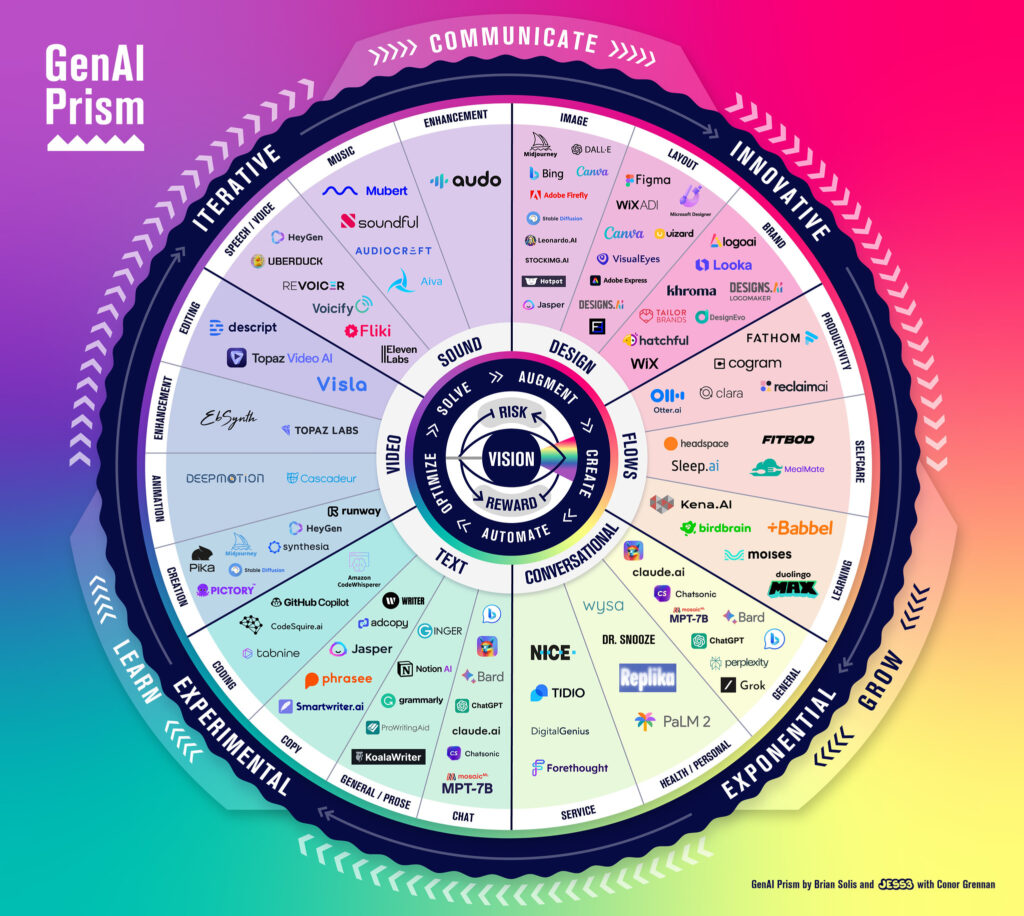


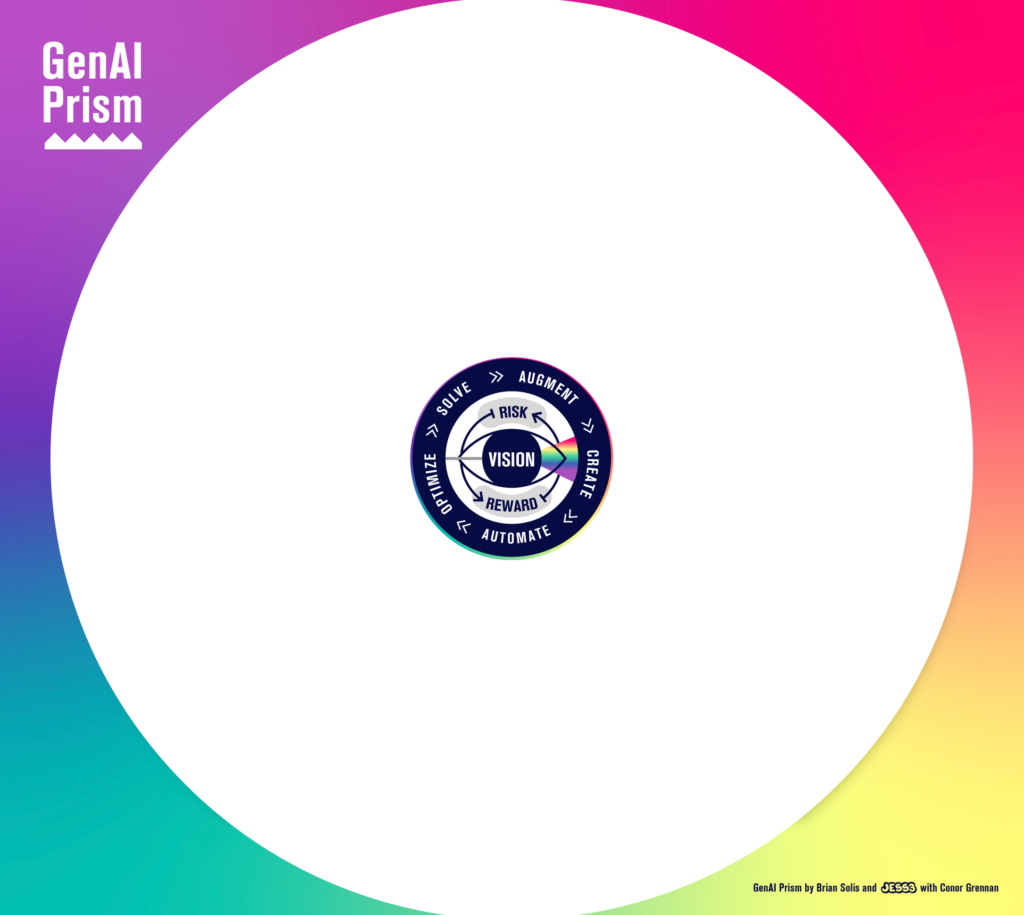
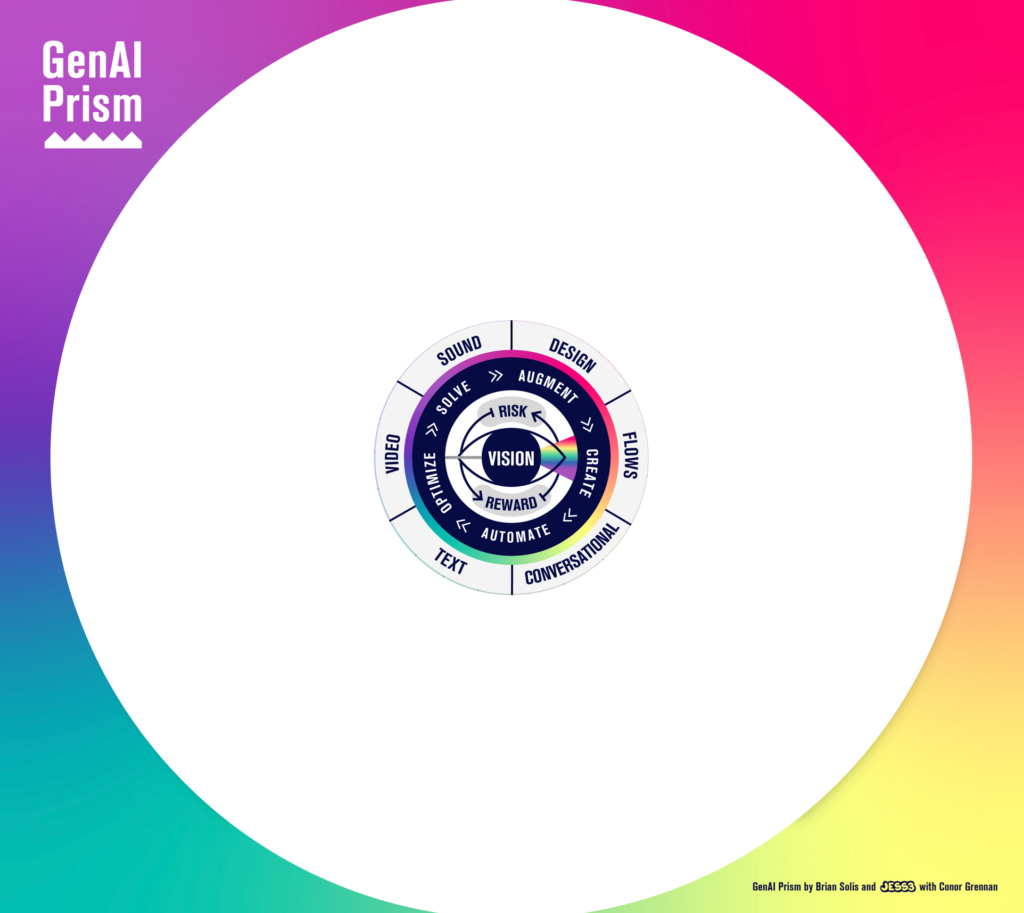
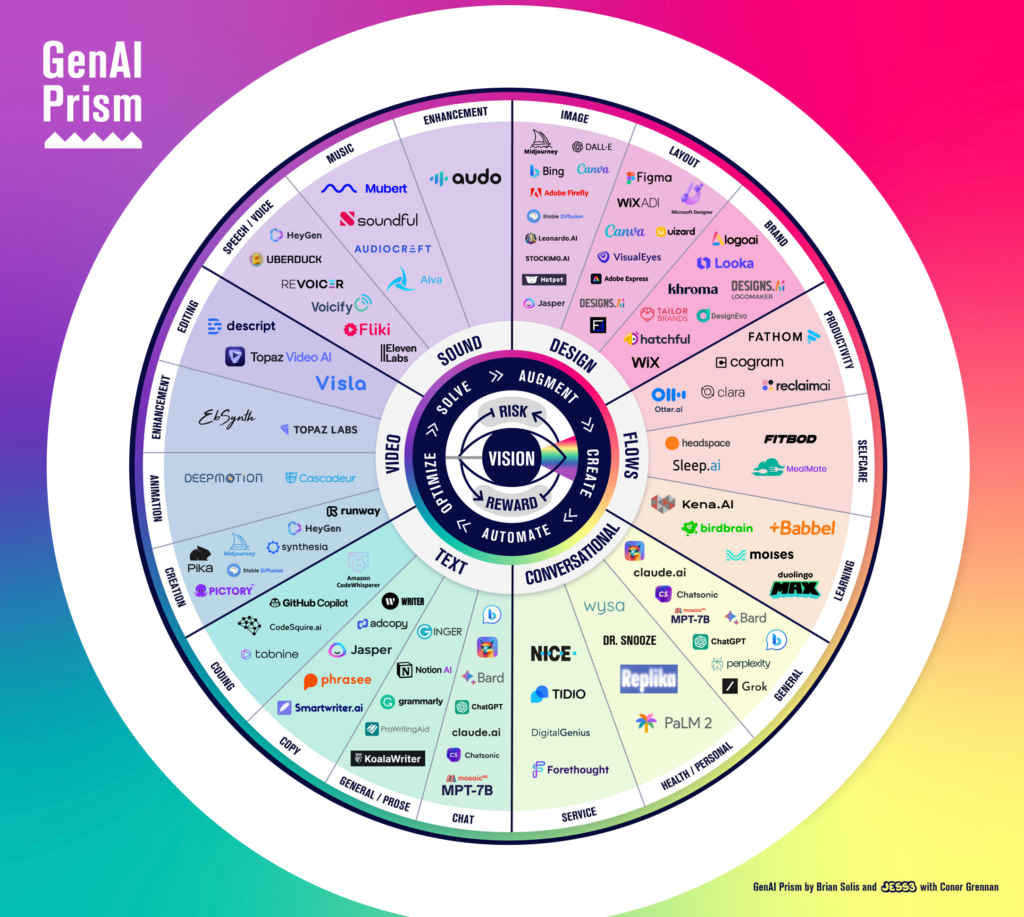
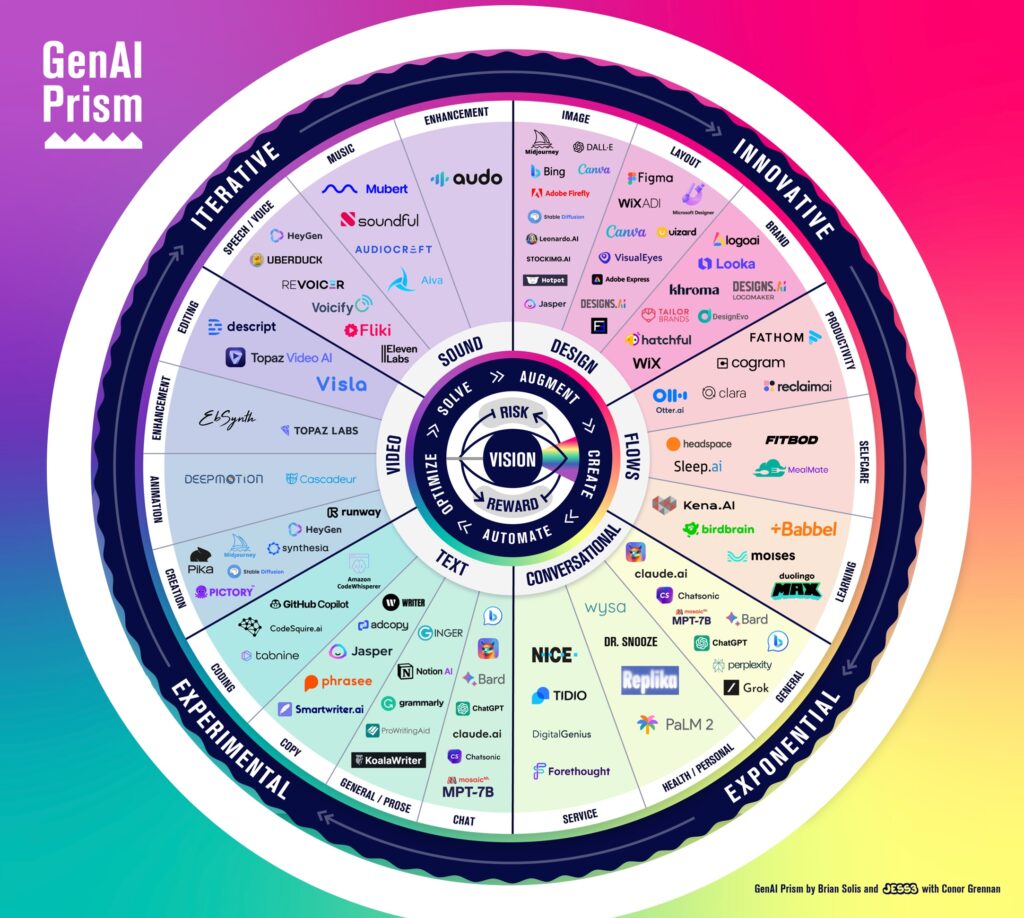


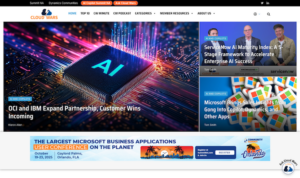



Leave a Reply